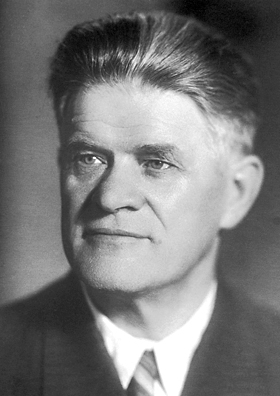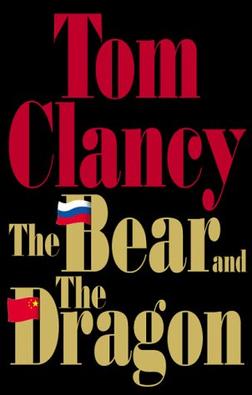
The Hunt for Red October is the debut novel by American author Tom Clancy, first published on October 1, 1984, by the Naval Institute Press. It depicts Soviet submarine captain Marko Ramius as he seemingly goes rogue with his country's cutting-edge ballistic missile submarine Red October, and marks the first appearance of Clancy's most popular fictional character, Jack Ryan, an analyst working for the Central Intelligence Agency, as he must prove his theory that Ramius is intending to defect to the United States.

Naval warfare is combat in and on the sea, the ocean, or any other battlespace involving a major body of water such as a large lake or wide river. Battles have been fought on water for more than 3,000 years.

Pavel Alekseyevich Cherenkov was a Soviet physicist who shared the Nobel Prize in physics in 1958 with Ilya Frank and Igor Tamm for the discovery of Cherenkov radiation, made in 1934.
The Rim of the Pacific Exercise (RIMPAC) is the world's largest international maritime warfare exercise. RIMPAC is held biennially during June and July of even-numbered years from Honolulu, Hawaii, with the exception of 2020 where it was held in August. It is hosted and administered by the United States Navy's Indo-Pacific Command, headquartered at Pearl Harbor, in conjunction with the Marine Corps, the Coast Guard, and Hawaii National Guard forces under the control of the Governor of Hawaii.

The United States Indo-Pacific Command (USINDOPACOM) is the unified combatant command of the United States Armed Forces responsible for the Indo-Pacific region.

The Bear and the Dragon is a techno-thriller novel, written by Tom Clancy and released on August 21, 2000. A direct sequel to Executive Orders (1996), President Jack Ryan deals with a war between Russia and China, referred respectively in the title as the Russian Bear and the Chinese Dragon. At over 1,028 pages, it is Clancy's longest novel. The book debuted at number one on The New York Times Best Seller list.

A reserve fleet is a collection of naval vessels of all types that are fully equipped for service but are not currently needed; they are partially or fully decommissioned. A reserve fleet is informally said to be "in mothballs" or "mothballed". In earlier times, especially in British usage, the ships were said to be "laid up in ordinary".

The First Taiwan Strait Crisis was a brief armed conflict between the Communist People's Republic of China (PRC) and the Nationalist Republic of China (ROC) in Taiwan. The conflict focused on several groups of islands in the Taiwan Strait that were held by the ROC but were located only a few miles from mainland China.

Peter Warren Singer is an American political scientist, an international relations scholar and a specialist on 21st-century warfare. He is a New York Times bestselling author of both nonfiction and fiction, who has been described in The Wall Street Journal as "the premier futurist in the national-security environment".

Prabowo Subianto Djojohadikusumo is an Indonesian politician, businessman and retired honorary army general, who has served as the 26th Indonesian Minister of Defense since 2019. Prabowo Subianto in 1983 married Titiek Suharto, the late President Suharto's second daughter. In 1998, he was discharged from the military and subsequently banned from entering the United States for allegedly committing human rights violations.
The Axis of Time trilogy is an alternative history series of novels written by Australian journalist and author John Birmingham, from Macmillan Publishing.

The Solomon Islands campaign was a major campaign of the Pacific War of World War II. The campaign began with Japanese landings and capture of several areas in the British Solomon Islands and Bougainville, in the Territory of New Guinea, during the first six months of 1942. The Japanese occupied these locations and began the construction of several naval and air bases with the goals of protecting the flank of the Japanese offensive in New Guinea, establishing a security barrier for the major Japanese base at Rabaul on New Britain, and providing bases for interdicting supply lines between the Allied powers of the United States and Australia and New Zealand.

A space command is a military organization with responsibility for space operations and warfare. A space command is typically a joint organization or organized within a larger military branch and is distinct from a fully independent space force. The world's first space command, the United States' Air Force Space Command was established in 1982 and later became the United States Space Force in 2019.

A series of events led to the attack on Pearl Harbor. War between the Empire of Japan and the United States was a possibility each nation's military forces had planned for after World War I. The expansion of American territories in the Pacific had been a threat to Japan since the 1890s, but real tensions did not begin until the Japanese invasion of Manchuria in 1931.

Indonesia–Russia relations are the bilateral relations between Indonesia and Russia. Indonesia and the Soviet Union established diplomatic relations in 1950. Russia has an embassy in Jakarta, and Indonesia has an embassy in Moscow along with a consulate general in Saint Petersburg. Both countries are members of the APEC and G-20.

The Third World War is an apocalyptic novel, published in 2003 by the British journalist and author Humphrey Hawksley, portraying the modern world as it deals with the ever-worsening geopolitical situation.

Threat Vector is a techno-thriller novel, written by Tom Clancy and co-written with Mark Greaney, and published on December 4, 2012. A direct sequel to Locked On (2011), President Jack Ryan and The Campus must prevent a Chinese expansionist government from enacting war in the South China Sea. The book debuted at number one on the New York Times bestseller list.

A space force is a military branch of a nation's armed forces that conducts military operations in outer space and space warfare. The world's first space force was the Russian Space Forces, established in 1992 as an independent military service. However, it lost its independence twice, first being absorbed into the Strategic Rocket Forces from 1997–2001 and 2001–2011, then it merged with the Russian Air Force to form the Russian Aerospace Forces in 2015, where it now exists as a sub-branch. As of 2024 the world's only independent space force is the United States Space Force.

Luhut Binsar Pandjaitan is an Indonesian politician, businessman, and retired four-star Army general who has been serving as Coordinating Minister for Maritime Affairs and Investment since October 2019. He previously served various posts in his political career, including the Coordinating Minister for Maritime Affairs from July 2016 to October 2019, Coordinating Minister for Political, Legal, and Security Affairs from August 2015 to July 2016 and Chief of Staff to President Joko Widodo. He was also Minister of Trade and Industry in President Abdurrahman Wahid's cabinet and Indonesian Ambassador to Singapore from 1999 to 2000.

Agus Harimurti Yudhoyono, more commonly referred to as AHY, is an Indonesian politician and former army major who is currently serving as the leader of the Democratic Party. Serving in the Army from 2000 until 2016, he is the executive director of the Yudhoyono Institute and founder of the Agus Harimurti Yudhoyono Foundation. He is the son of former Indonesian president Susilo Bambang Yudhoyono, more commonly known as SBY.
















